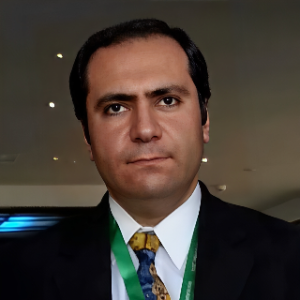Title : Diabetes mellitus and nanotechnology
Abstract:
Diabetes and Nanotechnology :
Magnitude of the problem
Type 2 diabetes mellitus (T2DM) is a prevalent chronic metabolic disease characterized by insulin resistance and impaired insulin secretion. It represents a significant global health challenge, with its prevalence steadily increasing worldwide. The rise in sedentary lifestyles, unhealthy diets, and obesity has contributed to the increase in T2DM cases, making it a major public health problem for both developed and developing countries with its deleterious impact on productivity and national finance. According to the International Diabetes Federation (IDF), the prevalence of diabetes is projected to increase significantly over the years. In 2021, there were approximately 537 million individuals aged 20 to 79 with diabetes worldwide. However, this number is expected to rise to 643 million by 2030 and further to 783 million by 2045. As the number of individuals affected by T2DM continues to grow, so does the burden on healthcare systems. The escalating demand for medical attention, diabetes-related complications management, and associated comorbidities put a strain on healthcare resources and infrastructure. Furthermore, T2DM’s long-term consequences significantly impact the patients’ quality of life and lead to increased healthcare costs. Traditional therapeutic approaches for T2DM management primarily include lifestyle modifications, oral hypoglycemic agents, and insulin therapy. While these methods have shown some efficacy, they also come with limitations such as suboptimal drug delivery, poor patient compliance, and potential adverse effects. Consequently, researchers have been exploring innovative and targeted strategies to address the challenges in T2DM treatment.
Nanotechnology :
Nanotechnology has emerged as a promising and revolutionary field that holds great potential in transforming the management of Type 2 Diabetes Mellitus. By exploiting the unique properties of nanoscale materials, scientists have begun to develop novel nanocarriers and nanosensors tailored for diabetes management. These advancements in nanotechnology offer exciting opportunities to enhance drug delivery, improve glucose monitoring, and provide innovative solutions for T2DM complications.
Conclusion :
Nanotechnology holds immense promise in revolutionizing Type 2 diabetes management through personalized medicine, improved drug delivery, and advanced glucose monitoring. While various nanocarriers and nanosensors offer potential benefits, addressing safety concerns and regulatory challenges will be crucial for successful clinical translation. Embracing these advancements will propel diabetes care towards a more effective, patient-centric future, enhancing overall well being and reducing the burden of the disease.



